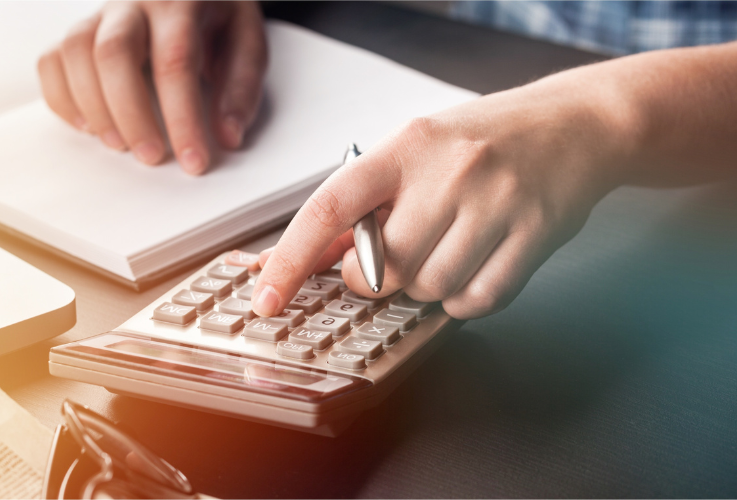When claiming an asset as a tax deduction, it must be depreciated over a number of years. But how do you know how much depreciation to claim each year? The following article will give you a rough guide to claiming depreciation as a tax deduction
An asset may be depreciated individually using either the prime cost or diminishing value method. Once a depreciation method has been chosen for the asset, the same method must continue to be used for the remainder of the assets life.
Assets may also be grouped into asset pools (subject to certain rules) and the pool will be depreciated as a whole.
Methods for Depreciating Assets Individually
Prime Cost
The prime cost method, also referred to as the straight line method, will depreciate an asset by equal amounts each year. To calculate how much depreciation to claim each year, divide the cost of the asset by its effective life. For example, an asset costing $5,000 with an effective life of five years will be depreciated at $1,000 each year ($5,000 / 5yrs).
Please note: To depreciate software you must use the prime cost method of depreciation.
Diminishing value
The diminishing value method calculates depreciation based on a percentage, and results in more depreciation being claimed in the first year and then diminishing amounts in the following years. To calculate the percentage of depreciation, divide 200% by the effective life of the asset. For example, an asset with an effective life of 10 years would be depreciated at 20% (200% / 10yrs).
Example: an asset costing $20,000 with an effective life of 15 years would have a depreciation percentage of 13.33% (200% / 15yrs).
In the first year, the depreciation you could claim is $2,666 ($20,000 x 13.33%).
In the second year, your asset would now be valued at $17,334 ($20,000 – $2,666), and the depreciation you could claim is $2,310 ($17,334 x 13.33%).
In the third year, your asset would be valued at $15,024 ($17,334 – $2,310), and the depreciation you could claim is $2,003 ($15,024 x 13.33%).
Asset Pools
Assets will not always need to be depreciated individually. Subject to certain rules, they may be added to either a Low-Value Pool (LVP) or a Small Business Pool (SBP). If you are not entitled to use the SBP, then the following rules apply for the treatment of assets.
- Assets worth less than $300 – These assets do not need to be depreciated, instead they can be expensed immediately.
- Assets between $300 – $1,000 – These assets can be added to the Low-Value Pool where they will be depreciated at 18.75% in their first year and then at 37.5% for their remaining years using the diminishing value method.
- Assets worth more than $1,000 – These will need to be depreciated individually either using the prime cost method or the diminishing value method.
Low-Value Pool (LVP)
Low-cost assets and low-value assets may be grouped in the LVP.
A low-cost asset has an original cost between $300 – $1,000.
A low-value asset is an asset that had an original cost of more than $1,000, but has now been depreciated to a value less than $1,000.
Once an LVP has been created, all new low-cost assets for the current financial year and all future years must be added to it, while any low-cost assets from prior years cannot be added to it.
Adding low-value assets to the LVP is optional. They may have a higher depreciation percentage if depreciating them individually, therefore you may wish to keep them separate from the pool. However, a low-value asset may only be added to the pool if it had previously been using the diminishing value method.
Please note: All new Low-cost software must be added to the LVP even though it would normally use the prime cost method.
Small Business Pool (SBP)
If you’re running a business with a turnover of less than $2million, your business is entitled to the Small Business Entity concessions. This means that the following rules apply for the treatment of assets.
- Assets worth less than $,1000 – As of 1st January 2014 these assets do not need to be depreciated, instead they may be expensed immediately.
- Assets worth more than $1,000 – These assets may be added to the SBP and depreciated at 15% in their first year, and 30% for all their remaining years using the diminishing value method.
Private use of asset
If you also use the asset for private purposes, the private proportion of depreciation cannot be claimed as a tax deduction. After calculating the depreciation on the asset, you will then need to calculate how much of that depreciation is for private purposes.
Example: You have a laptop that you use 80% for business and 20% for private purposes. Once you have calculated the depreciation on your laptop, for example $300, multiply $300 by 80% and you will have $240 of depreciation that you are allowed to claim as a tax deduction.
This is a rough guide of deprecation methods and rates as of January 2015. KT Associates does not accept any responsibility for tax returns lodged with depreciation deductions calculated based on this article. For further assistance please contact us on 03 9331 6855 or info@ktassociates.com.au to speak to one of our professionals.


